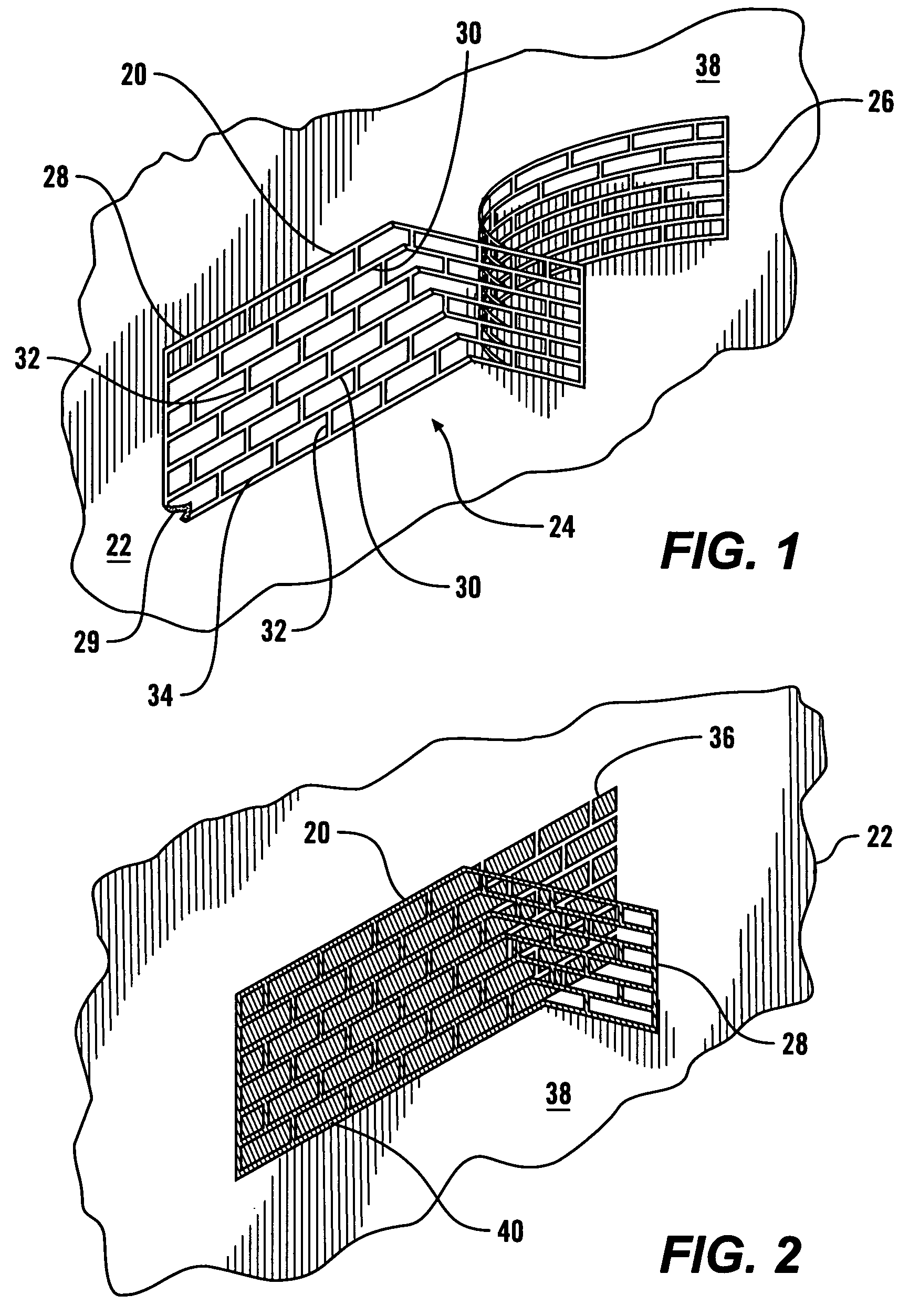Wall surfacing template
a wall surface and template technology, applied in the field of building wall surface templates, can solve the problems of high cost and time consumption of masonry construction, long lead time of bricks, and time-consuming removal of paper templates of prior art, and achieve the effect of convenient rapid removal of templates and high strength
- Summary
- Abstract
- Description
- Claims
- Application Information
AI Technical Summary
Benefits of technology
Problems solved by technology
Method used
Image
Examples
Embodiment Construction
[0012]Referring more particularly to FIGS. 1-2, wherein like numbers refer to similar parts, a template 20 is shown applied to a wall surface 22. The template 20 is provided to an installer as part of a template assembly 24 comprised of the adhesive backed template connected to a release liner backing sheet 26. The template 20 is formed from a substrate 28 which is a cut sheet of substrate material 28 having a pressure-sensitive adhesive coating 29 or other type of adhesive.
[0013]The adhesive may be an acrylic based adhesive or a rubber based adhesive, or other adhesive selected to adhere to the wall surface to which the template is intended to be temporarily attached. An aggressive adhesive, for example, may be used when the template is being attached to a rough wall surface.
[0014]The backing sheet 26 is cut to the same outline as the substrate 28 and protects the adhesive until use, at which point the backing sheet 26 is releasably removed from the substrate 28 without impairing t...
PUM
| Property | Measurement | Unit |
|---|---|---|
| thick | aaaaa | aaaaa |
| thick | aaaaa | aaaaa |
| size | aaaaa | aaaaa |
Abstract
Description
Claims
Application Information
 Login to View More
Login to View More - R&D
- Intellectual Property
- Life Sciences
- Materials
- Tech Scout
- Unparalleled Data Quality
- Higher Quality Content
- 60% Fewer Hallucinations
Browse by: Latest US Patents, China's latest patents, Technical Efficacy Thesaurus, Application Domain, Technology Topic, Popular Technical Reports.
© 2025 PatSnap. All rights reserved.Legal|Privacy policy|Modern Slavery Act Transparency Statement|Sitemap|About US| Contact US: help@patsnap.com


